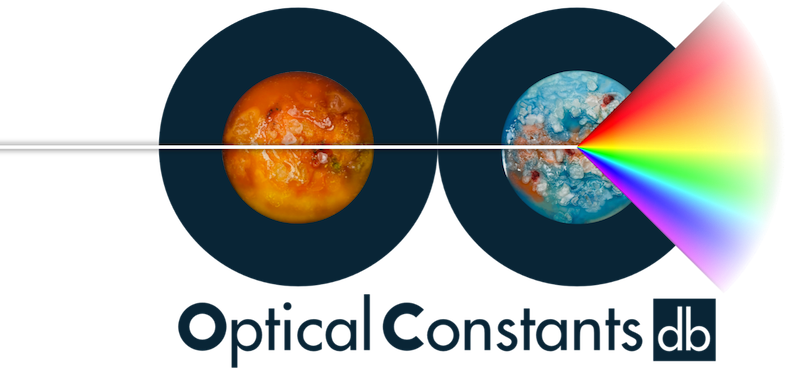What is OCdb?

The goal of the Optical Constants database is to centralize published optical constants data to facilitate access to the community. We therefore encourage laboratories generating optical constants to contribute their data in order to increase their visibility and availability.
Optical constants are fundamental input parameters for models used to interpret observational data. They support strategic research activities recommended by the "Origins, Worlds and Life" Planetary Science and Astrobiology Decadal Survey 2023-2032 such as "measuring the composition of hazes and aerosols in the atmosphere and on the surface [of planetary bodies]", "determining the distribution, nature and abundance of clouds and the composition [...] of the droplets comprising them and cloud condensation nuclei around which they form, "[constraining] the compositions of planetary surfaces from remote sensing data" and "[improving] the characterization of diverse ices, and the mineral and organic products of water-rock interaction that are fingerprints of habitability"
The Optical Constants Database was developed by the NASA Ames Astrophysics & Astrochemistry Laboratory, within the Space Science and Astrobiology Division at NASA Ames Research Center under two Directed Work Packages funded by the NASA Science Mission Directorate Astrophysics Division (APD) and Planetary Science Division: The NASA Ames Laboratory Astrophysics Directed Work Package (LADWP) and the NASA Center for Optical Constants (NCOC). The Optical Constants Database provides published, peer-reviewed, optical constants data in a venue that is both publicly accessible and open to data contributions from the greater scientific community.